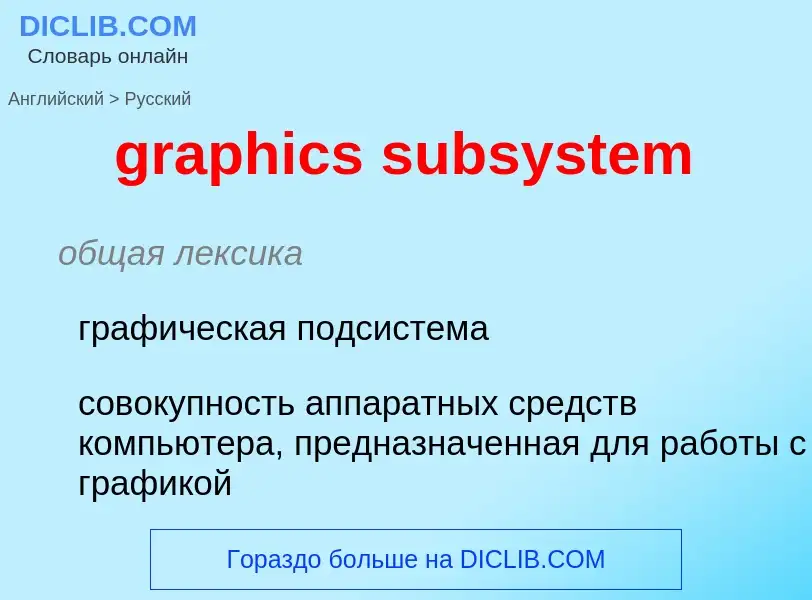ترجمة وتحليل الكلمات عن طريق الذكاء الاصطناعي ChatGPT
في هذه الصفحة يمكنك الحصول على تحليل مفصل لكلمة أو عبارة باستخدام أفضل تقنيات الذكاء الاصطناعي المتوفرة اليوم:
- كيف يتم استخدام الكلمة في اللغة
- تردد الكلمة
- ما إذا كانت الكلمة تستخدم في كثير من الأحيان في اللغة المنطوقة أو المكتوبة
- خيارات الترجمة إلى الروسية أو الإسبانية، على التوالي
- أمثلة على استخدام الكلمة (عدة عبارات مع الترجمة)
- أصل الكلمة
graphics subsystem - ترجمة إلى الروسية
общая лексика
графическая подсистема
совокупность аппаратных средств компьютера, предназначенная для работы с графикой
общая лексика
трёхмерная графика
методы и инструментальные средства построения на компьютере видеоизображений, имеющих объём и перспективу
синоним
تعريف
ويكيبيديا
The Job Entry Subsystem (JES) is a component of IBM's MVS mainframe operating systems that is responsible for managing batch workloads. In modern times, there are two distinct implementations of the Job Entry System called JES2 and JES3. They are designed to provide efficient execution of batch jobs.
Job processing is divided into several phases to provide parallelism through pipelining. These phases include input processing where jobs are read and interpreted, the execution phase where jobs run, and output processing where job output is printed or stored on DASD. Jobs that are in the same phase of execution are usually said to reside on a particular queue; for example, jobs that are currently executing are on the execution queue.
To improve I/O efficiency, JES performs spooling, which provides multiple jobs with simultaneous access to a common storage volume. JES uses a structure called a checkpoint to backup information about currently executing jobs and their associated output. The checkpoint can be used to restore jobs and output in the event of unexpected hardware or software failures.
Although JES2 and JES3 provide the same core functionality, there are certain features that may be present in one JES but not the other. Because of these differences, one JES may be favored over the other in certain customer installations. JCL is used to define jobs to both JES2 and JES3, but small changes usually need to be made to the JCL to get a job written for one JES to run on the other. A common issue was that JES3 checked that all datasets listed in the JCL existed before execution or that there was a prior step where the dataset was defined as NEW,CATLG. JES2 did not insist on this, allowing the job to run even though it would fail when the step using it failed to find it.

![Blender]] and [[YafaRay]] Blender]] and [[YafaRay]]](https://commons.wikimedia.org/wiki/Special:FilePath/Engine movingparts.jpg?width=200)
![''Dunkerque''-class battleship]] rendered with [[flat shading]] ''Dunkerque''-class battleship]] rendered with [[flat shading]]](https://commons.wikimedia.org/wiki/Special:FilePath/Dunkerque 3d.jpeg?width=200)
![Cobalt]]. Cobalt]].](https://commons.wikimedia.org/wiki/Special:FilePath/Cannonball stack with FCC unit cell.jpg?width=200)
